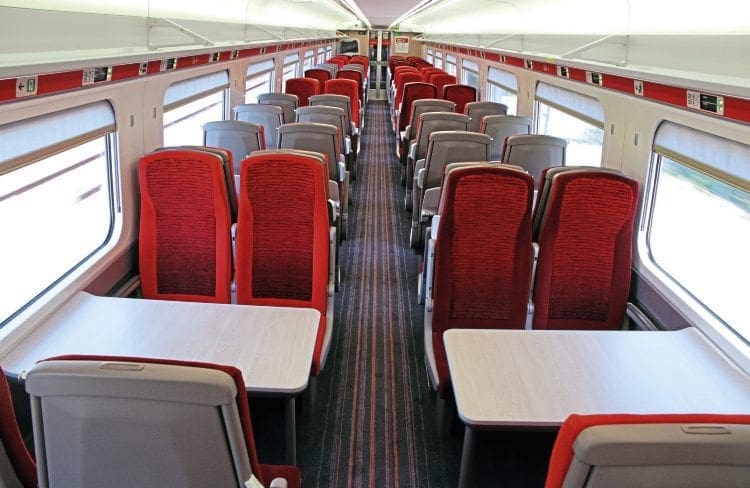Exciting times are ahead as the first trains of two new fleets entered service during April and May.
A total of 22 new or fully refurbished fleets are due for introduction by 12 train operators over the next three years, and The RM will be taking a closer look at these trains.

To kick off the series, Chris Milner samples the LNER ‘Azumas’, built by Hitachi, and VivaRail’s Class 230 ‘D’ train.
Monthly Subscription: Enjoy more Railway Magazine reading each month with free delivery to you door, and access to over 100 years in the archive, all for just £5.35 per month.
Click here to subscribe & save
Enter the ‘Azuma’!
The transition to new trains for passengers who use LNER services along the East Coast Main Line got underway on May 15 when the first Hitachi Class 800 ‘Azuma’ – No. 800113 – worked the 11.03 King’s Cross-Leeds. The following day set No. 800102 was used on a Hull diagram.

It’s an exciting step forward for the state-backed operator, but one which will also lead to the start of withdrawal of the immensely popular Class 91 and Mk4 trains, and also HST sets. Three Class 91s are due to be handed back to the leasing company by the end of June, rising to seven by August 31 as the ‘Azuma’ rollout progresses.
A lot has happened since the East Coast franchise was under the tenure of Stagecoach and Virgin, with the first ‘Azuma’ unveiled at King’s Cross on March 18, 2016. There have been many changes since then, but crucially the same team has remained involved to provide the continuity to deliver these new trains, and provide a new passenger experience.

LNER is having 65 ‘Azuma’ trains built by Hitachi at Newton Aycliffe. This new fleet is a mix of electric and bi-modes, both five- and nine-car units with a design speed of 140mph, although 125mph will remain the maximum for the time being. The ‘Azuma’ name comes from the Japanese language and means ‘east’.
Speaking to The RM at the press trip to Peterborough on May 14, Hitachi managing director Karen Boswell said: “For me it’s a really important day. I know first hand the impact these trains will make, having been involved in East Coast for more than five years. The train will be a transformation.
“You have capacity, performance and the on-board environment. Passengers will be excited. It’s the next generation of technology.”
Read more and view more images in the June 2019 issue of The Railway Magazine – on sale now!




